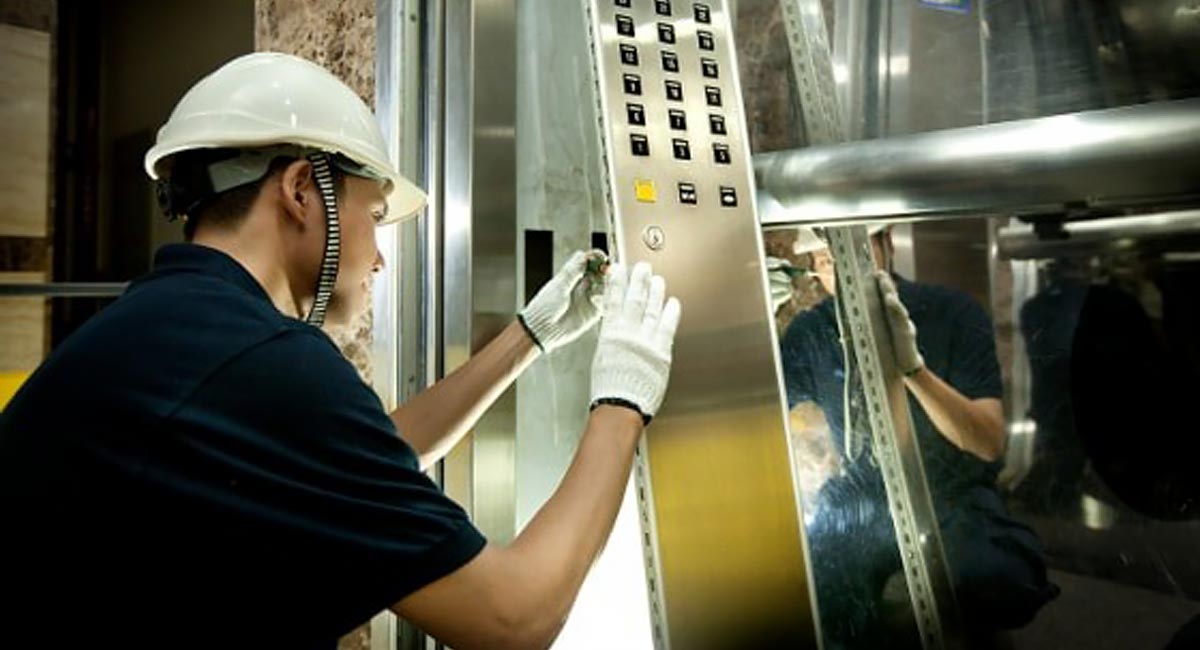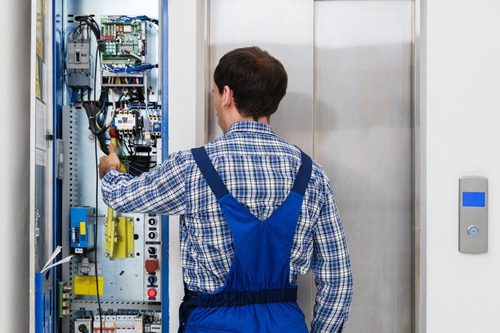Professional Lift Engineer Course: Educating for Top Lift Repair Companies Near Me
Professional Lift Engineer Course: Educating for Top Lift Repair Companies Near Me
Blog Article
Comprehensive Guide to Lift Solutions and Their Upkeep
Navigating the detailed globe of elevator systems and their maintenance is a job that requires precision and understanding. From the various kinds of elevator systems in usage to the meticulous adherence to safety guidelines, the maintenance of these vertical transport tools is a multifaceted endeavor.
Kinds Of Lift Systems
The most common types include hydraulic elevators, grip lifts, machine-room-less lifts, and vacuum lifts. Hydraulic lifts are optimal for low-rise buildings and utilize a hydraulic piston to move the lift cars and truck. Machine-room-less lifts are a space-saving option as they do not call for a different equipment area for the lift equipment.
Each sort of elevator system has its own benefits and downsides, making it essential for structure proprietors and programmers to thoroughly consider their particular requirements before selecting the most ideal option. Factors such as developing height, room accessibility, power efficiency, and budget restrictions all play a substantial role in identifying the most effective elevator system for a specific building.
Usual Upkeep Problems
Routine upkeep of elevator systems is vital to guarantee smooth operation and prolong their life expectancy. Regardless of regular upkeep, elevator systems can still encounter common maintenance concerns that require to be quickly dealt with to stop disturbances in service. Among the most frequent problems is door malfunctions. Elevator doors may get misaligned, causing issues with opening and closing properly. This can cause delays and security threats, calling for instant interest from maintenance professionals. An additional usual problem is connected to the elevator's leveling precision. If the elevator does not line up properly with the floors, passengers may experience tripping hazards and discomfort. Additionally, concerns with the control system, such as sensor troubles or electrical issues, can create the elevator to malfunction or stop functioning entirely. Regular inspections and aggressive upkeep can assist recognize and settle these common maintenance issues before they intensify and impact the total efficiency of the lift system.
Security Laws and Compliance
Complying with strict security regulations and guaranteeing compliance with industry criteria are extremely important for maintaining the operational honesty of lift systems. Lifts undergo an extensive set of security policies to guard travelers, maintenance workers, and the public. Regulative bodies such as the Occupational Security and Health And Wellness Administration (OSHA) in the USA and the European Lift Organization (ELA) in Europe establish guidelines that cover numerous aspects of elevator style, operation, upkeep, and setup.
Compliance with these policies is not just a lawful demand yet likewise a moral obligation for building owners and lift upkeep companies. Failing to satisfy safety and security requirements can result in penalties, lawful responsibilities, and, most notably, endanger the safety and security of people utilizing the lift. Routine inspections, upkeep checks, and adherence to safety and security procedures described in the regulations are important to make sure the effective and secure operation of elevator systems. By focusing on security regulations and compliance, stakeholders can promote the depend on of the public and reduce prospective threats associated with elevator usage.
Best Practices for Maintenance

Structure owners need to likewise think about investing in modernization upgrades to improve the effectiveness and safety of their elevator systems. By following article these best practices, elevator systems can operate efficiently and securely, offering reliable vertical transportation for owners.

Advanced Technologies for Performance
Applying innovative technologies in lift systems can significantly boost functional performance and traveler experience. These systems permit travelers to input their desired flooring before entering the elevator, which after that routes them to the most reliable car.
Moreover, the combination of smart sensing units and predictive maintenance abilities has actually transformed elevator maintenance. These sensors can find possible issues before they rise, making it possible for positive upkeep interventions and decreasing downtime. In addition, making use of energy-efficient elements and regenerative drives helps in reducing power consumption and operating prices in lift systems.
Additionally, the application of cloud-based monitoring and remote diagnostics permits real-time monitoring of elevator performance and immediate troubleshooting of any type of malfunctions. This positive strategy not only enhances system integrity yet likewise enhances the total individual experience by guaranteeing nonstop Resources and smooth elevator procedures.
Verdict
Finally, recognizing the various kinds of lift systems, usual maintenance issues, safety and security policies, finest maintenance techniques, and advanced innovations for effectiveness is important for ensuring the smooth operation of elevators. By adhering to safety policies and executing finest practices for maintenance, structure owners can prolong the lifespan of their lift systems and make certain the safety of passengers. It is necessary to stay upgraded on the newest improvements in lift modern technology to boost effectiveness and integrity.
The most typical kinds include hydraulic elevators, traction elevators, machine-room-less elevators, and vacuum elevators. Hydraulic elevators are ideal for low-rise structures and make use of a hydraulic piston to relocate the elevator car. Machine-room-less elevators are a space-saving option as they do not call for a different maker room for the elevator machinery. Normal evaluations and right here proactive upkeep can assist identify and settle these common upkeep concerns before they escalate and affect the total efficiency of the elevator system.

Report this page